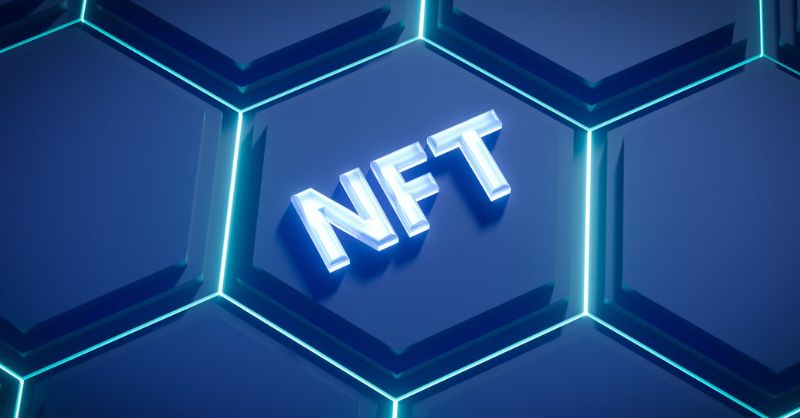As the metaverse expands, NFTs unlock digital ownership. If you’re an artist, collector, or virtual real estate tycoon, grasping how NFTs intertwine with the metaverse economy is key.
This guide simplifies “nfts and digital ownership in the metaverse” as ownership and commerce cornerstones in digital realms.
NFTs & the Metaverse Nexus
NFTs hold significance in the vast metaverse digital universe of many virtual worlds. These unique blockchain-tokenized digital assets inject the virtual world with ownership and economic vigor. NFTs revolutionize financial infrastructures via:
- Tamper-resistant blockchain
- Smart contracts
- Facilitating automation
- Innovative metaverse economic activities
This fascinating technology and imagination fusion, including cloud computing, enables new engagement and trade levels in virtual spaces using digital avatars. Tech firms significantly develop immersive virtual environments for user exploration.
In the burgeoning world of digital ownership, NFTs (Non-Fungible Tokens) are not just revolutionizing art and collectibles. Still, they are also making significant strides in online casinos, particularly in games like poker for real money.
These unique digital assets offer a novel way to represent ownership of exclusive items and privileges within the virtual gambling space. For instance, owning a rare NFT could grant access to unique poker real money tables or tournaments in the metaverse, creating a unique blend of digital ownership and online gaming.
Defining Virtual World Digital Ownership
In the metaverse realm, ownership means possessing distinctive digital assets like online land parcels, artistic creations, and avatars secured by NFTs (non-fungible tokens). This modernizes conventional property rights views by extending them digitally.
People can make money from owning virtual items when they hold NFTs. For example, they might sell their virtual property or digital art creations. NFTs represent a big change in how we value property and assets in our increasingly digital world.
The Role of Blockchain Technology
Blockchain technology is the foundation that makes NFTs work correctly. It ensures that each NFT is unique and secure.
A code called an encryption function protects the NFT’s particular identifier taken from its data. Blockchain’s cryptographic security stops NFTs from being copied or faked. This creates a trustworthy system for proving ownership in the metaverse.
Blockchain is decentralized so that no one can tamper with it. This stops dishonest behavior and is vital for having real digital ownership.
Types of Digital Assets Owned Through NFTs
Many types of digital items can be turned into NFTs within the metaverse, including:
- Virtual real estate
- Avatars
- Digital art pieces
- Items used within games
NFTs cover a wide range of digital assets. They create an active economy where each NFT has its own value and use.
Possession of an NFT denotes more than mere ownership of a digital asset. It represents engagement in the flourishing and dynamic realm of the digital economy.
Minting Your Mark: Creating NFTs for the Metaverse

Let us delve into the procedure of minting NFTs, which is a technique that converts digital creations into negotiable assets in virtual worlds.
This involves encrypting and logging the digital asset’s details on a blockchain to certify its authenticity and singularity.
To create an NFT, one must carry out a smart contract function during a blockchain transaction, embedding rules and properties specific to that asset.
Summarizing this process:
- Encrypt the information about the digital asset onto a blockchain.
- Conduct execution of a smart contract within said blockchain transaction.
- Imprint upon it all pertinent rules and characteristics tied to that asset.
In subsequent discussions, we will examine how this practice unfolds and its influence on artistry and commerce.
From Concept to Token
The journey of an NFT from inception to actualization starts with a creative idea. This digital asset can be forged from several forms of digital media, including:
- Still pictures
- Animated GIFs
- Sound clips
- Motion video
Subsequently, the creator must select a blockchain infrastructure that aligns with their needs alongside procuring a digital wallet to manage transactions.
Lastly, writing a smart contract is vital. This code establishes rules for ownership and trading of the NFT. This step upgrades the digital artwork into an exclusive, sellable item in the metaverse.
Smart Contracts: Purpose and Function
Smart contracts are the tech backbone of NFTs, providing a secure blockchain environment. Network members validate these contracts, which protect NFT exclusivity and confirm agreement terms.
Smart contracts are customizable to include royalties and set ownership rules while following standards like ERC-721 for verifying transactions. They’re the digital deed confirming ownership rights and boosting project security.
Artistic and Economic Impact
Creating NFTs have far-reaching effects for artists and creators. By tokenizing digital works, artists can access major new income streams as collectors take notice.
Also, coding in royalties from smart contracts means ongoing earnings from future resales. Key NFT creation benefits include:
- Unlocking fresh revenue channels
- Greater visibility attracts more attention.
- Artists can earn money from future resales.
- NFTs preserve digital ownership records.
These benefits make NFTs appealing to artists looking to profit from digital art.
NFTs represent a shift in how art is perceived, creating fresh artistic opportunities and ways to gain financially.
NFTs’ Economic Role in the Metaverse

A metaverse economy powered by NFTs unveils untapped potential for creators, investors, and users. Projections indicate it could drive a $5 trillion value by 2030.
Examining this sphere reveals NFTs, enabling innovative business approaches within the metaverse. They facilitate monetizing digital items, experiences, revealing new investment avenues.
Commercializing Virtual Encounters
NFTs’ economic promise in the metaverse stems from monetizing virtual experiences. Enabling exclusive event access or distinctive digital rarity, fosters revenue prospects for creators.
This NFT-virtual experience convergence forges a novel economic transaction model digitally. It encompasses unique memberships, collectible moments, and branded signature interactions.
Digital Asset Investment: Weighing Risks and Prospects
Like emerging domains, NFT investment, carries unique challenges tied to volatile valuations. Speculative fervor can foster bubble fears, with excitement over substance driving purchases.
Still, the NFT’s fundamental blockchain tech hints at metaverse commercial potential and stabilization. This maintains their persistent worth amid virtual world proliferation.
The Impact of NFTs on Traditional Art and Collectibles
NFTs are creating a new collector’s market in the metaverse and shaking up the traditional art and collectibles industries. Both economic growth and the value of digital collectibles have increased due to this innovation.
A new generation of collectors is entering this market, primarily younger people who prefer digital art to traditional forms of expression.
The analysis will focus on how artwork formerly limited to physical form is now evolving into digital forms.
We’ll also look into how online galleries and shows are growing, creating new venues for the art community to enjoy and express themselves artistically.
From Real Artworks to Digital Scenes
NFTs are causing a significant change in the art world by emphasizing digital media more than traditional physical works.
Digital art, a growingly popular form of NFT, allows producers to commercialize their creations directly and gives collectors verified ownership documentation.
Conventional galleries and cultural institutions are adjusting to the growing popularity of NFTs by selling and displaying digital artworks. This evolution demonstrates a significant shift in the art market.
Fake Worlds for Art Shows
The rise of online galleries and shows is changing our perception of the art world. We were once accustomed to wandering the hallowed halls of institutions like the MET, where the physical proximity to masterpieces allowed for a visceral, deeply personal experience of art.
Now, we are readjusting to their online versions, where virtual galleries offer a different form of accessibility and engagement.
This shift democratizes access to art, allowing people from all corners of the globe to explore collections they might never physically visit. Still, it also challenges us to reconceptualize how we interact with and interpret art in a digital context.
Traditional galleries are bridging the gap between the physical and digital domains by using modern channels for art distribution, such as virtual shows and interactive events centered around NFTs.
These online galleries have two uses. They serve as spaces for the exhibition of digital art as well as communities that encourage interaction and communication between collectors and artists.















